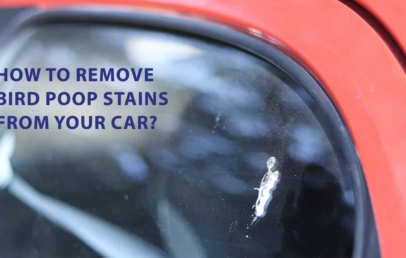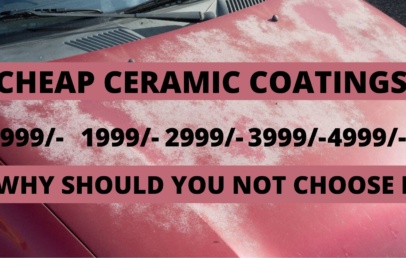
Introduction
Self-healing ceramic coatings have taken the automotive and surface protection industry by storm, promising to keep surfaces pristine by repairing minor scratches and imperfections. To truly understand how these coatings work, let’s dive into their chemical composition and the mechanisms that enable their self-healing properties.
The Chemical Composition
Self-healing ceramic coatings are complex formulations that blend cutting-edge nanotechnology with tried-and-true ceramic materials. The primary components typically include:
- Nanoscale Ceramic Particles: These tiny ceramic particles, often made of materials like silicon dioxide (SiO2) or titanium dioxide (TiO2), form the backbone of the coating. They provide hardness and durability to protect surfaces.
- Solvents or Resins: These serve as the carrier for the ceramic nanoparticles, allowing them to be evenly dispersed and applied to the surface.
- Thermoplastic or Thermosetting Polymers: These are the secret behind the self-healing magic. These polymers are responsible for the coating’s ability to “heal” itself when subjected to certain conditions.
The Self-Healing Mechanism
The real wonder of self-healing ceramic coatings lies in their ability to autonomously repair minor scratches and abrasions. This process is enabled by the unique characteristics of thermoplastic or thermosetting polymers.
- Activation: When a scratch or imperfection occurs on the coated surface, it disrupts the structure of the polymers in that specific area.
- Thermal Energy: The key to self-healing is thermal energy, usually provided by sunlight, a heat gun, or even warm water. This energy source triggers the polymers to become mobile.
- Polymer Reorganization: As the temperature rises, the polymer chains start to move and reorganize themselves, gradually returning to their original configuration.
- Healing: This reorganization process essentially “heals” the damaged area. The scratch or imperfection disappears as the polymer chains revert to their initial state, leaving a smooth and unblemished surface.
It’s important to note that the extent to which a self-healing ceramic coating can repair damage depends on the severity of the scratch and the quality of the coating. While these coatings excel at mending minor surface imperfections, they may not fully heal deeper or extensive damage.
The Pros of Self-Healing Ceramic Coatings
- Scratch Resistance: Excellent protection against minor abrasions and swirl marks.
- Gloss and Shine: Enhances the visual appeal of surfaces, providing a glossy finish.
- UV Protection: Shields against UV rays, preventing paint oxidation and fading.
- Chemical Resistance: Highly resistant to various chemicals, including acidic substances and bird droppings.
- Longevity: Can last several years with proper maintenance, reducing the need for frequent reapplications.
Self-healing ceramic coatings are a testament to the remarkable fusion of nanotechnology and materials science. Their ability to autonomously repair minor damage has made them a favorite among those looking to preserve the aesthetics and longevity of their surfaces. However, it’s crucial to understand the role of thermoplastic or thermosetting polymers and the importance of proper application and maintenance to harness the full potential of these coatings. Whether for your car’s paint or other valuable surfaces, the science behind self-healing ceramic coatings offers a fascinating glimpse into the future of protective technology.
The Dark Side of Self-Healing Ceramic Coatings
Self-healing ceramic coatings have garnered widespread attention for their remarkable ability to repair minor scratches and provide long-lasting protection. However, beneath their glossy surface, these coatings are not without their share of drawbacks. In this article, we’ll take a closer look at some of the cons associated with self-healing ceramic coatings, shedding light on the less glamorous side of this technology.
The Cons of Self-Healing Ceramic Coatings
- Costly Investment: One of the most significant drawbacks of self-healing ceramic coatings is their price tag. High-quality coatings and professional application can be expensive, making them a substantial financial commitment.
- Professional Application Required: Achieving optimal results with self-healing coatings often necessitates professional application. This adds an extra layer of expense and inconvenience for those who prefer DIY solutions.
- Limited Self-Healing: While these coatings excel at repairing minor scratches and swirl marks, they have limitations. Deep or extensive damage may be beyond their self-healing capabilities, leaving you with unsightly imperfections.
- Regular Maintenance: Self-healing ceramic coatings require diligent maintenance to uphold their performance. Frequent washing and occasional reapplication of a topcoat are necessary to ensure their longevity.
- Complex Application Process: Applying self-healing coatings can be a time-consuming and intricate process. It demands meticulous surface preparation, ensuring that the coating adheres correctly, which can be challenging for amateur users.
- Not a Miracle Cure: It’s essential to recognize that self-healing ceramic coatings are not a magical solution to all surface problems. They cannot prevent all types of damage, such as rock chips or severe collisions.
- Environmental Impact: The production and disposal of self-healing coatings, like many industrial products, can have environmental consequences. These coatings may contain chemicals and materials that are not eco-friendly.
Conclusion
While self-healing ceramic coatings offer exciting advantages in terms of protection and aesthetics, it’s crucial to weigh these benefits against their drawbacks. The high cost, professional application requirements, and ongoing maintenance can be significant deterrents for many consumers. Additionally, the limited self-healing capability and the environmental impact of these coatings raise important concerns.
In conclusion, self-healing ceramic coatings may not be the perfect solution for everyone. Before investing in these coatings, it’s essential to consider your specific needs, budget, and willingness to commit to their upkeep. While they certainly have their place in the world of surface protection, it’s important to approach them with a critical eye and realistic expectations.
Disclaimer : The content provided on this blog by Torquoholic is intended for informational purposes only. The views and opinions expressed herein are those of the individual authors and do not necessarily reflect the official policy or position of Torquoholic as a whole. Some content posted on this blog is created by Torquoholic's team, while other content is derived from various sources on the internet, books, discussions, and knowledge sharing by industry professionals. While we strive to ensure the accuracy and reliability of the information provided, we cannot guarantee its completeness or timeliness. The information presented on this blog is based on our personal research and understanding of the topic at hand. It should not be interpreted as a comprehensive education on the subject matter. Readers are encouraged to conduct their own research and consult with relevant professionals for specific advice or information. Torquoholic shall not be held liable for any errors, omissions, or inaccuracies in the content provided on this blog, nor for any actions taken in reliance thereon. We disclaim any responsibility for the content of external websites linked to from this blog. By accessing and using this blog, you agree to indemnify and hold Torquoholic and its authors harmless from any claims, damages, or losses arising from your use of the information provided herein. Thank you for your understanding and continued support.




